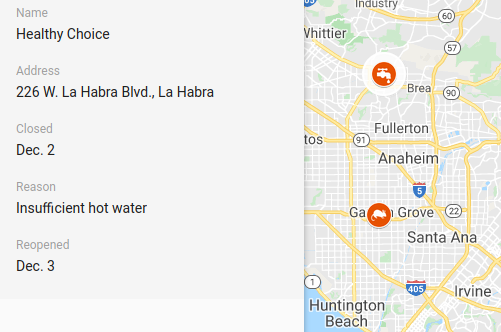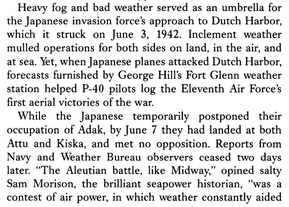An neuroscience article from 2017 in HBR lays out the premise that improving trust has direct and immediate benefits to productivity:
Compared with people at low-trust companies, people at high-trust companies report: 74% less stress, 106% more energy at work, 50% higher productivity, 13% fewer sick days, 76% more engagement, 29% more satisfaction with their lives, 40% less burnout.
This study was based upon “an amount of money to send to a stranger via computer” and also claims it found an absolute observed causation.
This research even took me to the rain forest of Papua New Guinea, where I measured oxytocin in indigenous people to see if the relationship between oxytocin and trust is universal. (It is.)
I want to get back to that point in a minute, but first, I noticed that exposing vulnerabilities is one of their key recommendations for building trust when running a business.
Show vulnerability: Leaders in high-trust workplaces ask for help from colleagues instead of just telling them to do things. My research team has found that this stimulates oxytocin production in others, increasing their trust and cooperation. Asking for help is a sign of a secure leader—one who engages everyone to reach goals. Jim Whitehurst, CEO of open-source software maker Red Hat, has said, “I found that being very open about the things I did not know actually had the opposite effect than I would have thought. It helped me build credibility.” Asking for help is effective because it taps into the natural human impulse to cooperate with others.
This tracks to the story I wrote about here before where the British in WWII undermined Nazi morale using such a “show vulnerability” tactic.
…the BBC was choosing to broadcast detailed news of Britain’s military setbacks. The decision was part of a deliberate strategy to win the hearts and minds of the German people…
Now back to Papua New Guinea and the indigenous people. If trust is universal, that doesn’t necessarily mean money fits the model. An article way back in 2013 made the salient point that modern psychology tends to be heavily biased towards post-industrial value systems.
At the heart of most of that research was the implicit assumption that the results revealed evolved psychological traits common to all humans, never mind that the test subjects were nearly always from the industrialized West. Henrich realized that if the Machiguenga results stood up, and if similar differences could be measured across other populations, this assumption of universality would have to be challenged.
The results being talked about are this: not all people play the prisoner dilemma game the same way. People living in the Amazon Basin jungle regions of southeastern Peru had a fascinating take on trust.
When he began to run the game it became immediately clear that Machiguengan behavior was dramatically different from that of the average North American. To begin with, the offers from the first player were much lower. In addition, when on the receiving end of the game, the Machiguenga rarely refused even the lowest possible amount. “It just seemed ridiculous to the Machiguenga that you would reject an offer of free money,” says Henrich. “They just didn’t understand why anyone would sacrifice money to punish someone who had the good luck of getting to play the other role in the game.”
Believing someone else has luck in getting to be the winner is a collaborative and holistic view, much like seeing a team mate score a goal. But who is on which team, or is it all just one team? A new book called “The Social Instinct: How Cooperation Shaped the World” makes it sound like the Machiguenga are on to something:
If we think about society as a whole, we can think of nepotism, corruption, and bribery—not normally words that bring cooperation to mind, yet all describe some form of cooperation. Nepotism is helping a family member; corruption is forming a collaboration with another individual that, nevertheless, has a cost to society. So, global or societal cooperation is always under threat from more local cooperation, which affects our collective welfare. The big challenge for us is to find ways to cooperate to generate larger societal benefits and not just local benefits.
That can read completely backwards unless you acknowledge the Machiguenga are operating on a local level while thinking about larger societal benefits, whereas larger society is thinking the opposite. Another way of putting that reversal is the Mission 101 in the Horn of Africa, or even the French resistance in WWII: small local cells of thinkers cooperated in order to generate larger societal benefits while under occupation by Nazis (who tried to elevate their own status based on distrust, spreading corruption on a platform that redirected society benefits to a very small group).
So it begs the question if you ask for help and show vulnerability, how do you tell whether you are on the same team, or the right team? It reminds me of the lesson “Stop Trying to Raise Successful Kids: And start raising kind ones.”
However much we praise kindness and caring, we’re not actually showing our kids that we value these traits. Perhaps we shouldn’t be surprised, then, that kindness appears to be in decline. A rigorous analysis of annual surveys of American college students showed a substantial drop from 1979 to 2009 in empathy and in imagining the perspectives of others. Over this period, students grew less likely to feel concern for people less fortunate than themselves—and less bothered by seeing others treated unfairly. It’s not just that people care less; they seem to be helping less, too.
The authors suggest popularity tests in American society are growing imbalanced, measurably dragged away from kindness and towards artifice (status).
Psychologists distinguish between two paths to popularity: status (which derives from being dominant and commanding attention) and likability (which comes from being friendly and kind). […] We tell our own children that they shouldn’t hang out with the popular kids who sneer and laugh when a classmate trips in the cafeteria. They should get to know the kids who help pick up her tray.
Let me take this even further and suggest the proper study of history is inherently about disclosing vulnerability, a shared attempt to quickly find flaws and correct them where everyone theoretically could be on the same team. Kindness and caring would stem from greater levels of trust, however that status thing often gets in the way like a siren song calling sailors to crash upon the rocks.
Here’s a 2021 opinion piece on a 1973 report called “‘Lessons’ of the Past: The Use and Misuse of History in American Foreign Policy”, which credits Taiye Selasi (a founder of Afropolitanism) with vulnerable thought:
It presented viewpoints I had not fully considered and reinforced the obvious but important lesson that our own thinking improves when we expose ourselves to voices and ideas we don’t typically encounter. What if we are wrong? While they rarely say so out loud, the best scholars, analysts, and decision-makers always wonder. Perhaps, however, we are asking the wrong question. History demonstrates time and again that, despite great effort, we will be wrong as often as not. The past demonstrates that world politics is so complex, historical processes so interdependent, that we should always expect the unexpected. Marc Bloch reminds us that “history is neither watchmaking not cabinet construction” but “an endeavor towards better understanding and, consequently, a thing in movement.” The real question — and the true benefit of engaging with the past — is how we will respond when we are wrong.
I especially relate to that last point. Sometimes when I confidently present a take on history, especially in public presentations, I am asked how dare I claim to have the only perspective on an event. Just look to the left at “popular blog posts” for an example of what they are talking about.
To this critic I always try to reply it’s the opposite, as I see the study of history much like tuning a sailboat in danger of running aground.
Like finding a vulnerability in someone’s map or chart for a destination, I’m not claiming to be replacing their destination with my own. My claim usually is to have found a vulnerability and present a transparent and repeatable falsification test to show that we all can improve our own perspectives and arrive more safely, no matter where we are headed (together or not).
How people respond when they are proven wrong is an excellent test not only of trust, but of their sense of fairness.
Perhaps there is no better introduction to this topic than the 1949 book by Marc Bloc “The Historian’s Craft: Reflections on the Nature and Uses of History and the Techniques and Methods of Those Who Write It”
This is a work that argues constantly for a wider, more human history. For a history that describes how and why people live and work together. There is a living, breathing connection between the past and the present and it is the historian’s responsibility to do it justice.
Bloch joined the French Resistance rather than escape, writing on the nature of history while under occupation by Nazis and without access to libraries or colleagues. He was executed by firing squad in 1944, his book published posthumously. His story is a perfect example of the duality of trust and vulnerability, within a context of threat to life itself. Imagine how productive he could have been if he had been even more trusted at that time.










